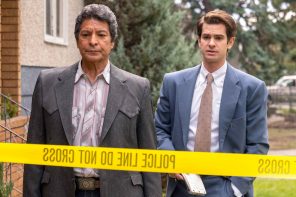Changes to LDS Church policy on homosexuality will be presented to LDS lay clerical leaders worldwide this Saturday, November 13.
The changes are being introduced through a global leadership training satellite broadcast for the release of the newly revised Church Handbook of Instructions (CHI), a 400-page lay priesthood manual reserved for use by LDS Church members in local and regional lay leadership positions.
Multiple advance copies of the CHI leaked on the internet reveal significant changes to Church policy on homosexuality.
Websites are reporting changes (in CHI Book 2) as follows, with deletions marked in strikeouts and additions in italics:
Homosexual behavior violates the commandments of God, is contrary to the purposes of human sexuality, distorts loving relationships, and deprives people of the blessings that can be found in family life and in the saving ordinances of the gospel. Those who persist in such behavior or who influence others to do so are subject to Church discipline. Homosexual behavior can be forgiven through sincere repentance.
If members have homosexual thoughts or feelings or engage in homosexual behavior, Church leaders should help them have a clear understanding of faith in Jesus Christ, the process of repentance, and the purpose of life on earth. Leaders also should help them accept responsibility for their thoughts and actions and apply gospel principles in their lives.
While opposing homosexual behavior, the Church reaches out to understanding and respect to individuals who are attracted to those of the same gender. [Paragraph moved from second to third position.]
In addition to the inspired assistance of Church leaders, members may need professional counseling. When appropriate, bishops should contact LDS Social Services to identify resources to provide such counseling in harmony with gospel principles.
If members feel same-gender attraction but do not engage in any homosexual behavior, leaders should support and encourage them in their resolve to live the law of chastity and to control unrighteous thoughts. These members may receive Church callings. If they are worthy and qualified in every other way, they may also hold temple recommends and receive temple ordinances.
As was the case in reading the LDS Church’s October statement in response to the controversy surrounding Elder Boyd K. Packer’s General Conference Talk, these are incremental but significant changes. The new CHI:
1. Removes the implication that same-sex relationships “distort” love.
2. Removes the imperative that members should repent for having “homosexual thoughts or feelings.”
3. Removes the instruction that Church leaders should refer members to professional counseling. This is especially significant because in times past leaders were encouraged to refer members to practitioners of reparative therapy such as Evergreen International. Reparative therapy has been discredited by scientists and professionals and, in some instances—including the electroshock aversion therapy prescribed by BYU-affiliated practitioners in the 1970s—exposed as abusive.
4. Adds the counsel that LGBT members who remain chaste should be “supported” and “encouraged” by Church leaders and be included in every dimension of LDS life and practice.
As I said of the LDS October statement, the new CHI does not offer institutional welcome or affirmation to LGBT people who want to live full lives as LGBT people. It maintains that “homosexual behavior” is sinful. It does not create space for LGBT Mormons to attend church on Sunday with their partners, as I am able to do. But it does show institutional LDS movement on LGBT issues, most crucially—one hopes—for LDS LGBT young people who may have been brought up to despise themselves simply for having homosexual thoughts and feelings. Church leaders will play a pivotal role in making sure this message gets out to local congregations, where it is most needed.




